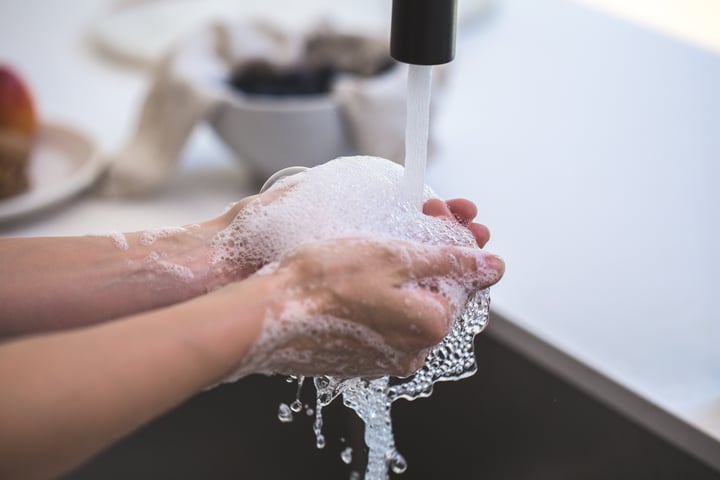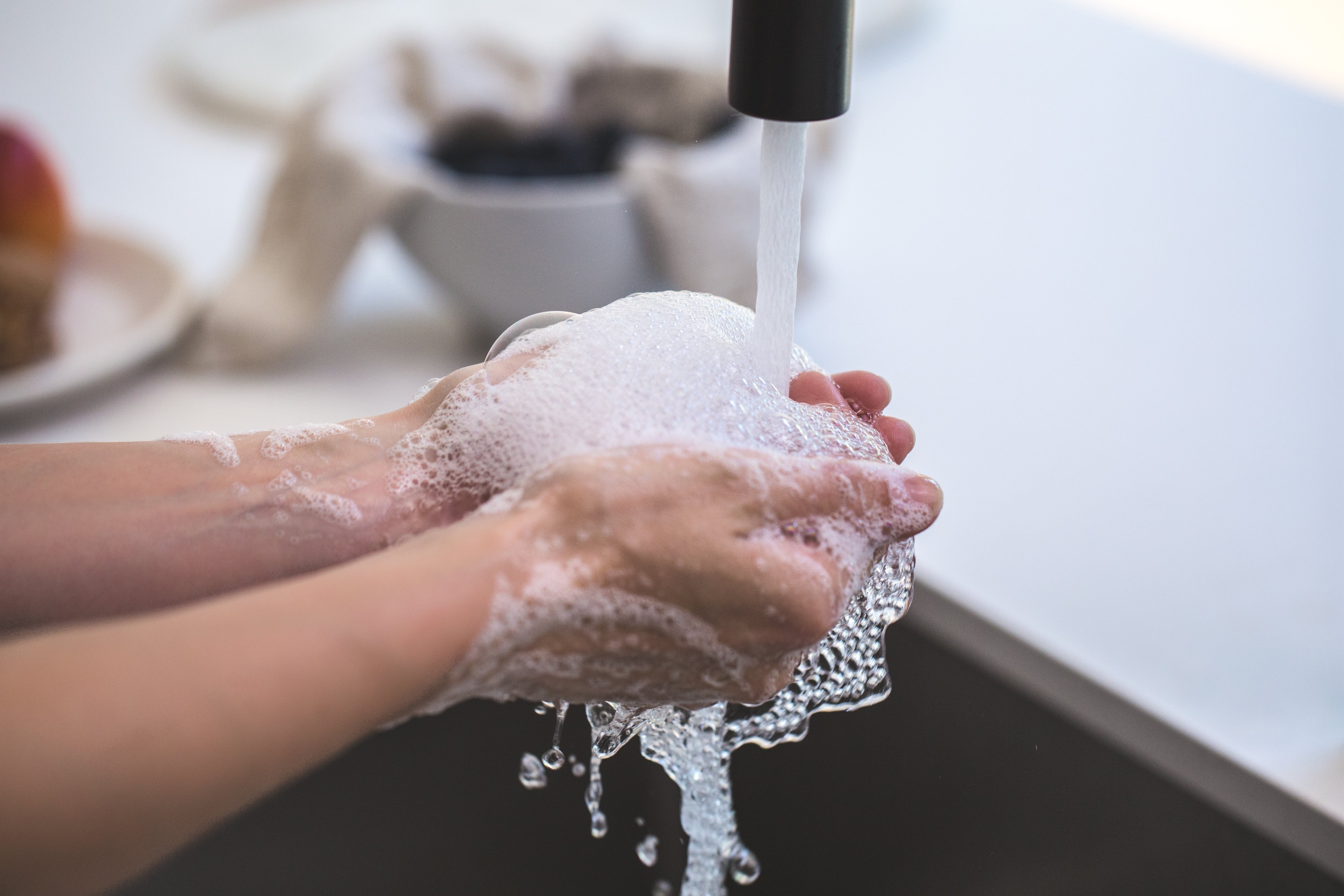
You don't need us to remind you of the dramatic, unprecedented and far-reaching impact that Covid-19 has had on the UK population's health, along with society, the economy, the education system, mental health issues and the hard-hit NHS as a whole. We've all been living with the global pandemic and its seemingly relentless repercussions for the best part of 2020. Although 'worst' part might be a more prudent choice of word in this instance.
The problem is - and as winter approaches - Covid-19 isn't going anywhere anytime soon. Which means the populace has to learn viable ways of controlling both the spread of the virus and returning to something akin to a relatively normal sense of being.
Like pretty much every sector, the water hygiene and treatment industry has overseen changes; the implementation of which has been thrust upon us for the most part, as we - like everyone - adjusts their business during this challenging time.
Legionella Could Take Advantage of Buildings Being Inadvertently Placed Under Lockdown
If we return to the period of lockdown, which started, from the end of March 2020, then an issue which figures prominently in our own particular business model highlights a bigger picture. That picture being the dereliction of buildings for sustained passages of time. Properties which witness significantly reduced activity due to a number of pandemic-related scenarios.
Countless businesses and organisations were forced into temporary shutdown as rules pertaining to societal lockdown were passed by the government to slow the spread of the Coronavirus. The upshot being increasing numbers of employees were asked to work from home where possible.
This in turn led to closed water storage systems not being facilitated on a regular basis, as normal, and as anyone who works in the fields of water hygiene and treatment will tell you, a building which lies dormant for a prolonged period will invite the presence of waterborne bacteria. Conversely, being constantly flushed out, courtesy of routine activities, typically keeps potentially dangerous pathogens like legionella at bay.
A Post-Covid-19 'New Normal' Could See an Overhaul of Legionella Control Programmes as Property Owners React to Employee Confidence
Across the country, properties of all descriptions have been stood pretty much empty, or partially occupied at best. This reduction in turnover paves the way for water quality being affected. So now, as companies throughout the UK look to get their businesses up and running and safe to use once again, we address the core areas which require scrutiny.
Above and beyond any other measures being introduced, the best way in which to ensure that your existing legionella control plan remains fit for purpose in the aftermath of a shutdown as such, is to carry out a new risk assessment. An effective re-commissioning of a closed internal water storage system prior to workplaces re-opening will help ensure the water system is safe to use.
But then this alone doesn't answer another question which property owners might not automatically consider during these challenging times. What about any possible revisions to water usage which could follow Coronavirus; and the way we interact with physical elements relating to workplace water sources.
But What Exactly Do We Mean By This?
Various questions will be asked as we emerge from a post-lockdown landscape, not least in key sectors like public services. For example, healthcare and leisure settings, yet easily extended to the workplace for the same reason.
There is the idea that workplaces might change and never operate at the same capacity again, thanks to the implications of social distancing being practised, coupled perhaps with an uptick in homeworking. A host of posers might well come to the fore in the coming weeks and months.
Such as 'Will we wash our hands more frequently?'
Along with, 'Will alcohol gels be a replacement - or addition - to hitherto water facilities?'
Both very relevant questions, as are ones surrounding water coolers, toilet facilities and showers. All of which are traditional features and found commonly in business as well as public sector environments.
Questions will arise as to whether employees will feel confident enough to continue 'sharing' facilities, or will a combination of reduced staff on business premises and preferences
for bringing bottled water and hand gels into workplaces result in demand for water needing to be amended accordingly?
Only time will tell.
Why It's Vital to Revisit Your Legionella Management Programme, Post-Lockdown
But to the here and now, and it's imperative that businesses get a handle on - and keep on top of - their current legionella control best practices which have served them well to date.
Buildings left idle will almost certainly need intervention measures adopting to make their water system safe prior to reopening. The degree of intervention is the decision of the duty holder, however the way we see it is that a minimum requirement across the board is the implementation of either weekly or twice-weekly system flushes from the outset. Focusing on cleansing infrastructures which have succumbed to prolonged periods of low use or indeed, non-use.
Many properties being reopened are undergoing disinfection and flushing of their water systems prior to the system being used. And of course, one of the main reasons it's critically important to address existing legionella control processes within a business right now, is for the simple fact that there is a greater probability that already vulnerable people may be even more susceptible to Legionnaires’ disease due to a compromised respiratory system, in the event that they've contracted Covid-19.
What Other Precautions After Risk Assessments Are Performed and System Flushing Had Been Actioned Must I Take?
Providing legionella risk assessments have been undertaken, it's unlikely that any further steps will need to be taken. But that's not to say that other additional protocols such as testing water temperatures at outlets should be overlooked. Elsewhere, and any microbiological sampling undertaken over the course of the lockdown - and which indicates that no increase in total viable count (TVC) has occurred, is a positive. As is the returning of legionella bacteria samples which haven't detected anything untoward taking root during the period of restricted use.
Below we identify the main areas which should be closely monitored in terms of water hygiene and safety in a pre-lockdown situation.
Hot and cold-water systems - As we've mentioned above, it's important to flush these weekly to avoid stagnation (twice-weekly for ‘healthcare’ environments such as care homes and hospitals) if they are infrequently used. If this isn't feasible, then alternatively the building's water supplies should be subject to disinfection prior to reoccupation.
Cooling towers and evaporative condensers - In the event that these are out of operation for less than a month, then fans should be isolated; while biocidally-treated water needs to be circulated around the system for a minimum of 1 hour weekly. Upwards of a month without facilitation means the system requires draining, cleaning and disinfecting, prior to refilling and recommissioning.
Commercial spa pools and hot tubs - When use has been continuous, existing control measures should be adhered to. Conversely when not in use, draining, cleaning and disinfection of the closed water system needs to be affected before reinstatement.





